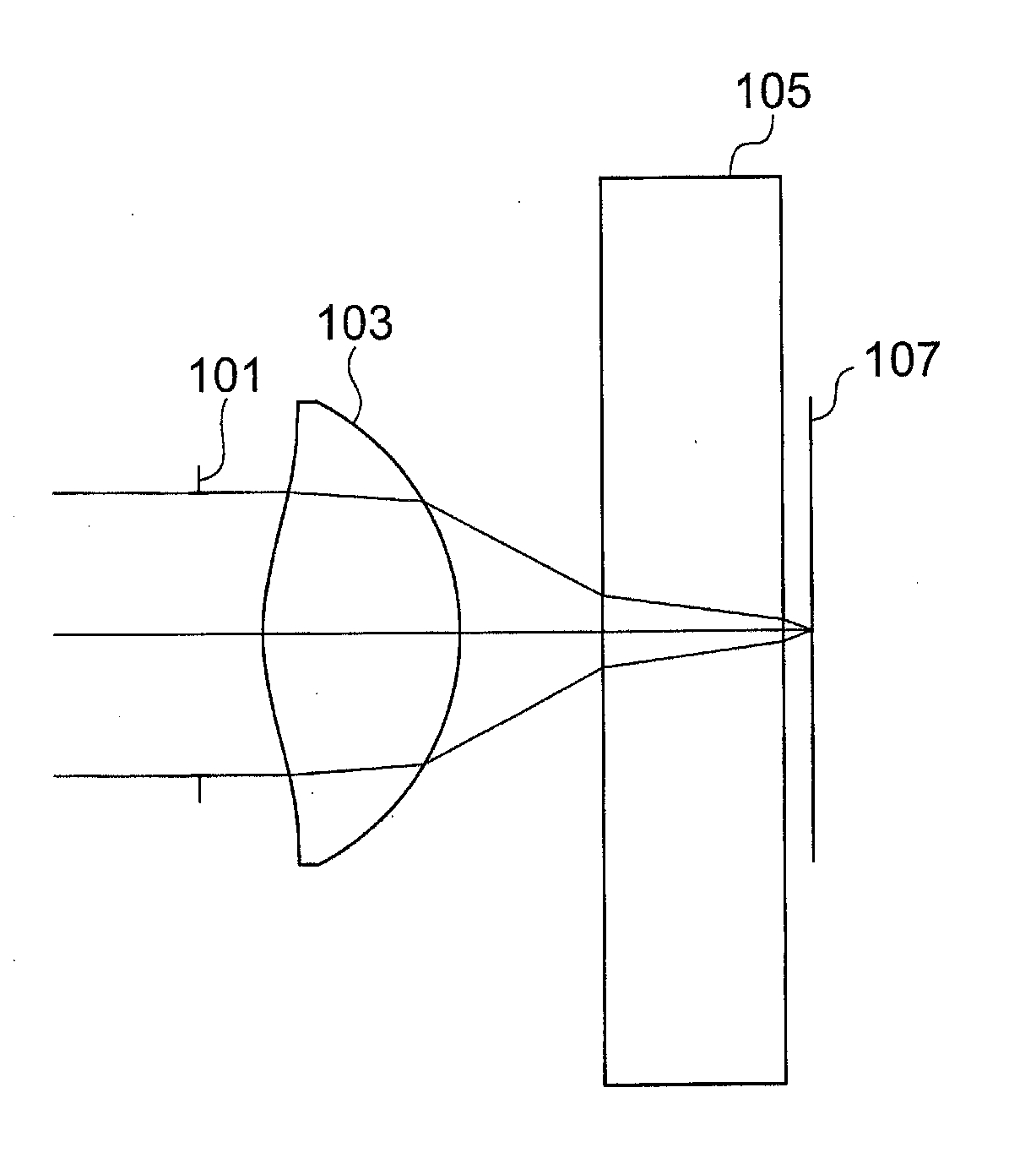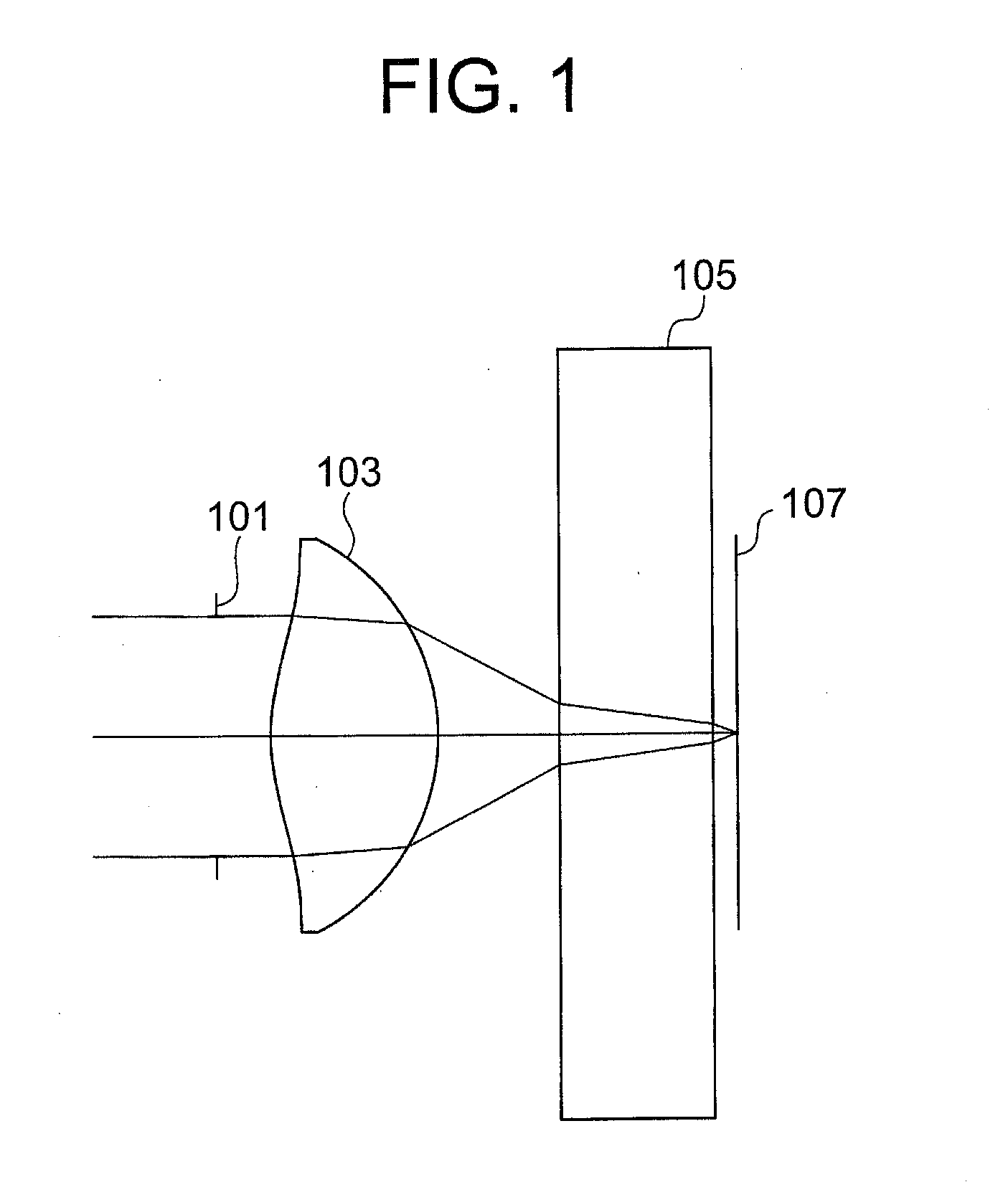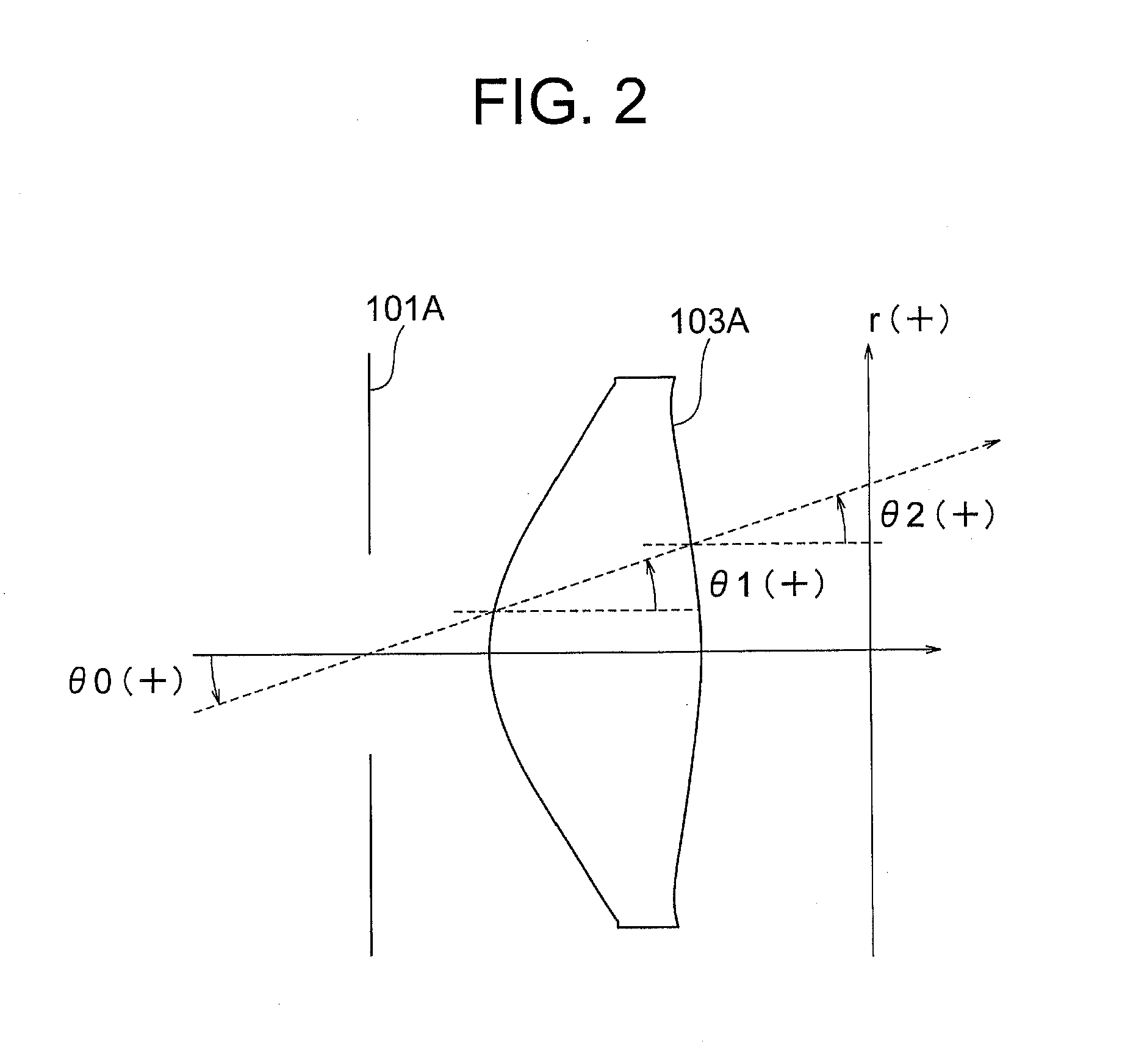Infrared imaging system
a technology of infrared imaging and infrared radiation, which is applied in the direction of radiation control devices, instruments, optical radiation measurement, etc., can solve the problems of insufficient infrared radiation amount, inability to use far-infrared imaging systems with synthetic resin lenses, and insufficient transmittance of synthetic resin materials, so as to reduce the sag of the surface, reduce the sag of the lens, and reduce the refractive power of the exit surface surface surface surface surface surface surface surface surface surface surface surface surface surface surface surface surface surface surface surface surface surface surface surface surface surface surface surface surface surface surface surface surface surface surface surface surface surface surface surfa
- Summary
- Abstract
- Description
- Claims
- Application Information
AI Technical Summary
Benefits of technology
Problems solved by technology
Method used
Image
Examples
example 1
[0067]FIG. 7 shows a construction of an infrared imaging system according to Example 1. The infrared imaging system includes, from the object side to the image side, an aperture 1101, a lens 1103, a protective plate 1105 and an image surface 1107. The entry surface of the lens 1103 (the object side surface) is shaped such that the surface is convex to the object side at least in the paraxial area. The straight line which passes through the center of the aperture 1101 and the center of the lens 1103 and is perpendicular to the plane of the aperture 1101 is designated as the optical axis.
[0068]Along the optical axis, the distance between the aperture 1101 and the entry surface of the lens 1103 is represented as t0, the thickness of the lens 1103 at the center is represented as t1, and the distance between the lens 1103 and the image surface 1107 is represented as t2. The thickness of the lens 1103 in the optical axis direction at the periphery of the effective aperture is represented ...
example 2
[0084]FIG. 12 shows a construction of an infrared imaging system according to Example 2. In the infrared imaging system, from the object side to the image side an aperture 2101, a lens 2103, a protective plate 2105 and an image surface 2107 are disposed. The entry surface of the lens 2103 (the object side surface) is shaped such that the surface is convex to the object side in the paraxial area. Although not shown in FIG. 12, the exit surface of the lens 2103 is shaped as a Fresnel lens. The straight line which passes through the center of the aperture 2101 and the center of the lens 2103 and is perpendicular to the plane of the aperture 2101 is designated as the optical axis.
[0085]Along the optical axis, the distance between the aperture 2101 and the entry surface of the lens 2103 is represented as t0, the thickness of the lens 2103 at the center is represented as t1, and the distance between the lens 2103 and the image surface 2107 is represented as t2. The thickness of the lens 2...
example 3
[0100]FIG. 17 shows a construction of an infrared imaging system according to Example 3. In the infrared imaging system, from the object side to the image side a first lens 3109, an aperture 3101, a second lens 3103, a protective plate 3105 and an image surface 3107 are disposed. The entry surface of the second lens 3103 (the object side surface) is shaped such that the surface is convex to the object side in the paraxial area. Although not shown in FIG. 17, the exit surface of the second lens 3103 is shaped as a Fresnel lens. The straight line which passes through the center of the aperture 3101 and the center of the second lens 3103 and is perpendicular to the plane of the aperture 3101 is designated as the optical axis.
[0101]Along the optical axis, the thickness of the first lens 3109 at the center is represented as ts1, the distance between the exit side of the first lens 3109 and the aperture 3101 is represented as ts2, the distance between the aperture 3101 and the entry surfa...
PUM
 Login to View More
Login to View More Abstract
Description
Claims
Application Information
 Login to View More
Login to View More - R&D
- Intellectual Property
- Life Sciences
- Materials
- Tech Scout
- Unparalleled Data Quality
- Higher Quality Content
- 60% Fewer Hallucinations
Browse by: Latest US Patents, China's latest patents, Technical Efficacy Thesaurus, Application Domain, Technology Topic, Popular Technical Reports.
© 2025 PatSnap. All rights reserved.Legal|Privacy policy|Modern Slavery Act Transparency Statement|Sitemap|About US| Contact US: help@patsnap.com



